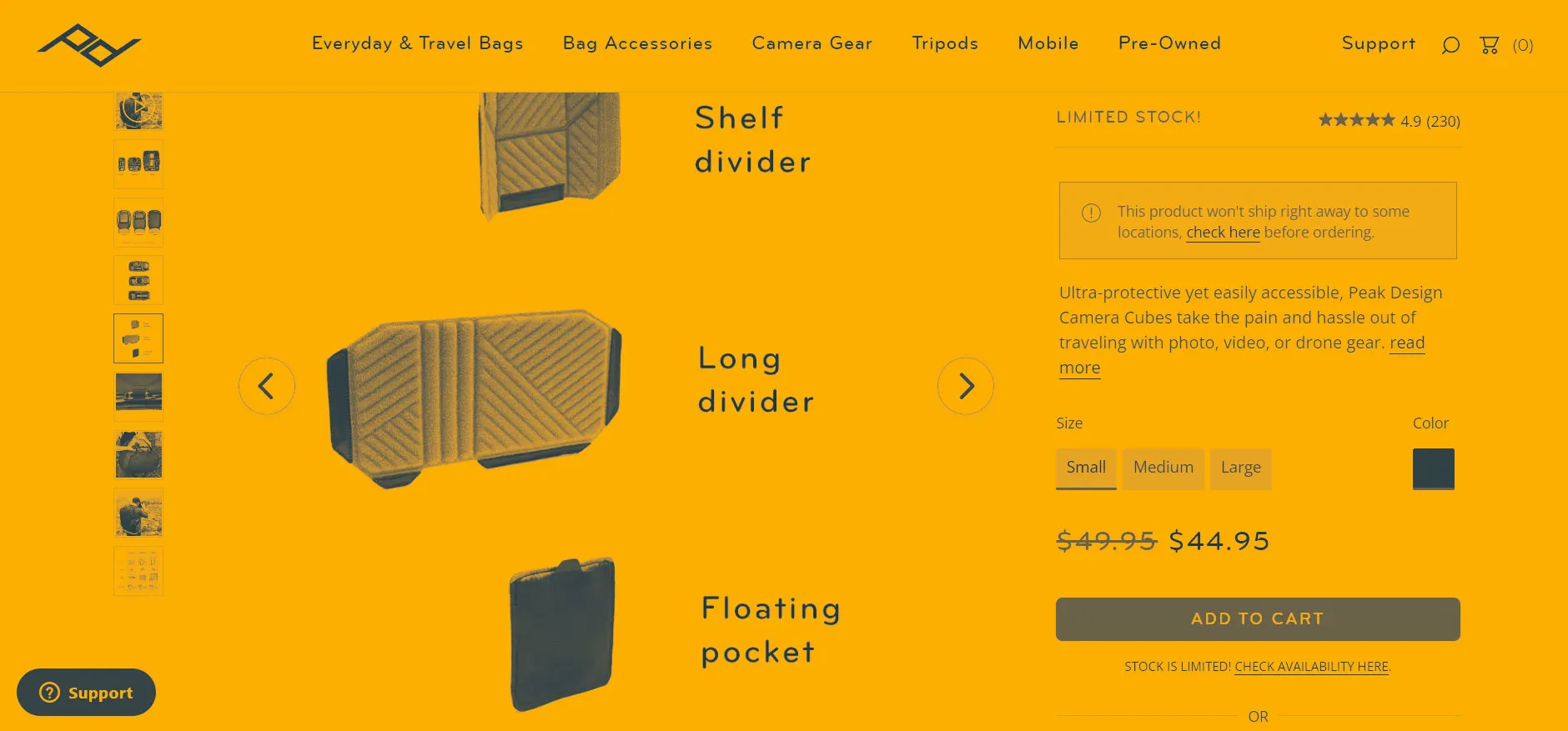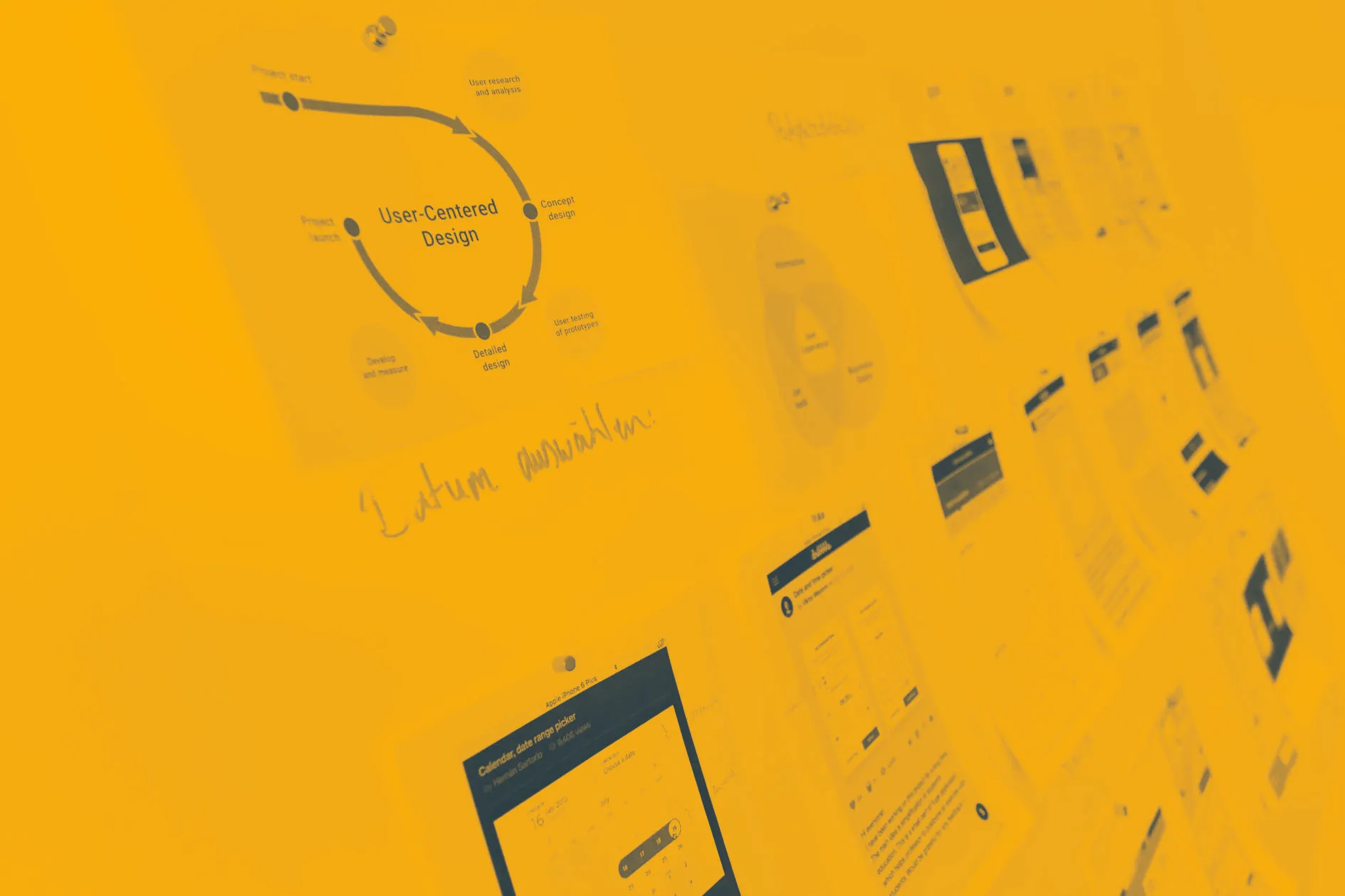In the second post of the series, we examine the role of product descriptions in creating a good shopping experience. While images help give the user an opportunity to form a first impression of the item, the product descriptions help the user qualify their purchase decision
Imagine you visit a hardware store – a physical shop with many products and usually one or more employees offering advice.
You find a can of paint and start wondering whether the paint can be used on the piece of furniture you want to paint; a wooden shelf with ivory handles.
Does the shelf need to be treated or prepared in a specific way before painting? And which paint will adhere to handles made of bone?
You read the label on the product: “Wood and metal” – check, but nothing about bone.
What do you do then?
From here, as a customer, you typically have two options to satisfy your information needs:
- to ask an employee (or digitally; to ask you via chat, email, phone, or whichever channels you offer help through), or...
- to check whether competitors have the information you’re looking for.
The modern consumer seeks information from many sources
The modern consumer willingly spends time doing online research, and a purchase can easily take more than 30 days to complete, studies from the US show.
This means there are many competing sources of information when a user visits your site.
The study above concludes, among other things, that customers typically visit three online retailers and two physical stores before making a purchase when they’re looking for products costing more than 500 USD (approx. 3500 DKK).
In this context, your product descriptions are therefore crucial in enabling the customer to make an informed purchase decision. If they can’t find the necessary information on your site – will they then turn to the retailer?
In the first part of this series, we established that images give the customer a first impression of your products and provide the customer with an opportunity to “hold” the product.
In this post, we look at texts; the data that enables the customer to qualify their initial choice and make an informed purchase decision.

Text as a medium is good at conveying large amounts of information in a clear and searchable way. Good texts lead to a good user experience and can consequently have significant SEO value.
Why are texts important?
Very few customers will buy a product they cannot read detailed information about.
Data about materials, applications, and properties are typically crucial for whether the customer can assess if a product is suitable for a given purpose. The exception is cases where the customer already knows the product, in which case price may prove to be the deciding factor.
Our many years of experience within Product Information Management (PIM) also speaks clearly in this context; the one with the best data (including texts) usually wins.
And by "the best data," we don’t just mean "the most data" (i.e., most images, most text, most datasheets).
If data isn’t presented in an easily digestible way, it can do as much harm as good—just like a poor image can. Missing or incorrect information about a product’s load capacity, temperature requirements, or timing can confuse the user and, in the worst case, make them unsure whether the product is right.
Peter Morville, one of the authors of the book “Information Architecture for the Web and Beyond”, states in his very popular thesis:
- “Findability precedes usability. […] You can't use what you can't find.”
In other words; if the user can’t find what they’re looking for, it doesn’t exist.
So it’s not enough that your texts are good in themselves. They must also be "packaged" correctly.
Texts are crucial for the user’s final purchase decision
The research institute Baymard Institute also emphasizes the importance of texts in their Product Page recommendations:
- "The vast majority of both desktop and mobile participants we tested with at some point used the product description to draw conclusions about the suitability of a product for their needs, even for products where the main purchasing evaluation was based on the product images." (Source: Baymard Institute)
Although images attract people, it’s the text that provides the final “push over the finish line” — that is, the purchase.
Baymard continues:
- "When faced with insufficient descriptions, testing showed that participants would either make incorrect assumptions about a product, or leave the product details page altogether to look for the information elsewhere — many times off-site." (Source: Baymard Institute)
Poor or incorrect texts can, in the worst case, cause trust in your site to fail, and the customer turns to the competitor.
Secondary effects of text work
Besides the ability to convey information, tell a story, and provide the customer with a solid decision basis, texts are also important for your marketing — especially when it comes to SEO.
When you invest time and energy in your texts, you can, with the right strategy, also achieve increased organic traffic, which should ideally lead to more sales, assuming your webshop is inviting.
What can you do to improve your product descriptions?
There is no substitute for a good copywriter. However, there are plenty of great tips that can make a good copywriter better — especially when it comes to the technical nature and quality of texts.
Today, text is more than just words, because the online medium contains more than the words themselves. As developers, we deal with markup, page speed, link building, information architecture, and much more.
You would do well to prepare for the fact that working with text today also involves formatting, segmentation, placement, markup, and similar tasks that are not just about the words you use, but also the context in which the words are used.
1. Make sure your texts allow the customer to “identify” and “distinguish” your products
One of the texts (besides the title) that most products are enriched with is the product description.
First and foremost, the product description exists so the customer can verify that the product has the necessary features:
- Does the product do what the user expects based on the images and title?
- For example, does an “electric egg cooker” depend on being plugged into an outlet, or can the machine operate on batteries? The title only lets the user know that electricity is needed, but not in what form.
- Are the product’s functions significantly different from what the name implies?
- For example, if the “ULTRA-PRO FISHING ROD 6000-X” is designed for beginners, the name may confuse customers who expect a product that meets professional use.
There will always be cases where it doesn’t make sense to have a completely unique product description — for example, for product variants. For spray paint, the difference between the red and blue variants will typically be that the color is different. In all other parameters, the final product will be the same, so the product description can usually be reused without major issues.
For spray paint, a clear distinction in the product name and product image will be enough to overcome the lowest barrier the consumer has: identification and distinction.
By reading the title and seeing the image, the customer can determine what the product does and clearly distinguish product variants from each other.
What you should consider
Benefits and practical steps you can control yourselves
Make product identification easy based on the name itself
Make sure your product names are representative of your products’ features and uses. In the example of the “ULTRA-PRO FISHING ROD 6000-X,” it’s important that the product actually justifies professional use and is not just a beginner’s tool. That will confuse the user.
Use your texts to make distinguishing your products easy
If your products have similar names, or if several of your products in a category share many characteristics, your product names and descriptions can be the place where you make differentiation easy.
Benefit: Avoid sending users away from your site
If a user has to leave your site to find information, you risk that they never come back. Maybe the user finds information on a competitor’s site and makes their purchase there. If your product names promise something different than what the product actually offers in terms of features, you also risk ending up with disappointed users who don’t trust your brand.
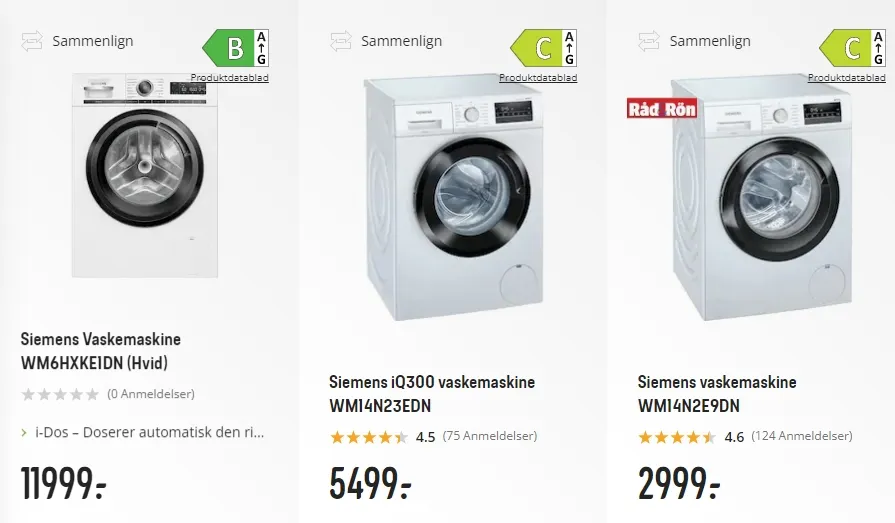
Appliances and computers have long been a criticized category because the products are difficult to distinguish from one another. Nothing in these products’ titles lets us understand why there is a price difference of nearly 10,000 DKK (Source: Elgiganten.dk)
2. Support and complement your images with descriptive texts
A good product image can usually be understood without the need for supplementary texts.
Still, some images can benefit from having supplementary texts attached — either in the product description or as dedicated text fields that in one way or another accompany the image (image descriptions below the image, attached labels, or similar).
The need for complementary texts can especially arise with product images that contain items other than just the product itself. In some cases, environmental images, where a product appears in a specific usage situation, can make it easier for the user to relate to the product’s function.
If there are accessories in the image, it can be difficult to determine what is included in the package when purchasing the product. Here, it may be helpful to have supplementary texts clarifying what a buyer receives in the package, and what may be “upsells” in the form of accessories.
Another typical example is situations where the image contains stickers, labels, or other visual elements (e.g., eco-labels). Here, an explanatory text can help the user understand what the label means.
What you should consider
Benefits and practical steps you can control yourselves
Start with your images, and write supplementary texts
Look closely at your images and consider whether there are other items in the image, environmental conditions, or similar that require further explanation. Make sure your users don’t end up with more unanswered questions than when they landed on the page.
Consider labels and categorization of features
If you review specific functions across many of your products, you may want to explore the possibility of developing one or more modules that allow users to identify any labels and tags and read more about them.
Benefit: Smart reuse of data
If you have the opportunity to create classification, categorization, or otherwise achieve smart reuse of data, you can save a lot of time by not having to write the same texts multiple times. At the same time, the customer’s decision-making basis is strengthened.
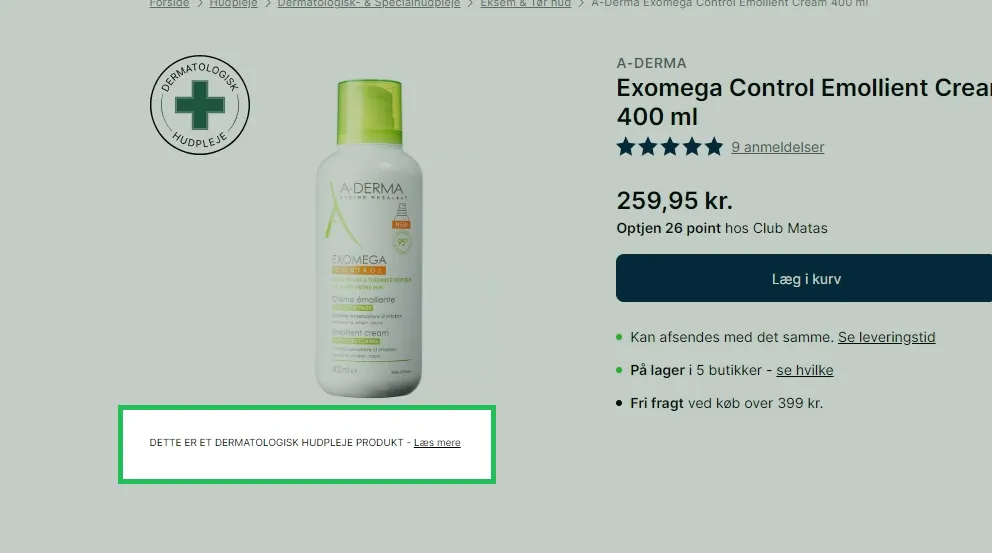
Matas supplements their image here with a well-chosen text that makes it easy for the user to get more information about the specific product labeling (Source: Matas)
3. Find the right level of information
A large product catalog almost always entails more text work. This requires prioritizing your efforts regarding your texts.
In part 1, we pointed out that poor product images are a no-go in your ecommerce efforts. The same applies to your texts.
For example, having great images is useless if the information customers find in your texts is poor.
If the quality of your texts falters, the rest of your efforts will also fall flat. You can ask yourself when you last bought a product based solely on, for example, the product images?
Every company prioritizes its resources, so it is rarely a good idea to insist that all products have the exact same level of information.
The right balance between "too much" and "too little" information ensures a satisfactory buying experience for the customer and gives you a realistic foundation to succeed with your text work.
What you should consider
Benefits and practical steps you can control yourself
Prioritize your efforts based on product price
Products with higher price tags naturally generate more preliminary considerations and thus a greater need for information. It logically follows that there should be a difference in the amount of description whether you’re selling cars or salt and pepper.
Prioritization based on competitors’ products
Typically, it’s a good idea to at least match your competitors’ level of information. In some cases, many products may be harder to differentiate because you may receive the same information from suppliers. This is where a good copywriter really gets to work, thinking about new formats and texts — for example, by adding personalization, reviews, or other concrete/tangible facts about the product to your product page.
Benefit: Save time and resources
By making good prioritization choices, you ensure that you don’t waste time creating unnecessarily long texts for your least demanded products.

In this product description, we see a camera lens described quite differently. One site offers three bullet points (since the "More Information" box is empty), while the other site provides several lines. Both sites include additional technical information, but the question here is — is the short description enough for a technical, somewhat niche product, or will the longer text generate more interest and more sales?
4. Create a clear structure for your information
Long, uninterrupted, and unstructured blocks of text can be intimidating and make it difficult for users to locate specific pieces of information.
Therefore, it can be a good practice to break descriptive texts into chunks that are easier to skim.
This makes the information easier to find.
Text division typically happens using the following techniques:
- Section division: Section division improves overview and enables more advanced navigation.
- Formatting (e.g., bullets, underline, bold/italic text): Formatting text creates visual hierarchy.
Section division is usually a good idea if you have many long texts. Formatting can be used to structure and highlight parts of a longer text.
What you should consider
Benefits and practical steps you can control
Break long texts into smaller, skimmable sections
If you have complex products with lengthy descriptions, it can be beneficial to divide these into distinct sections (e.g., "Technical Details," "Washing Instructions," "Materials," etc.). This makes the text easier for the customer to skim
Benefit: Highlight what’s important without cutting down your text
Proper structuring and formatting of texts allow you to reap the SEO benefits of a longer text while enabling your customers to navigate your wording and descriptions easily. This way, you avoid deleting valuable descriptive content, and the customer can both skim and delve deeper into the text.
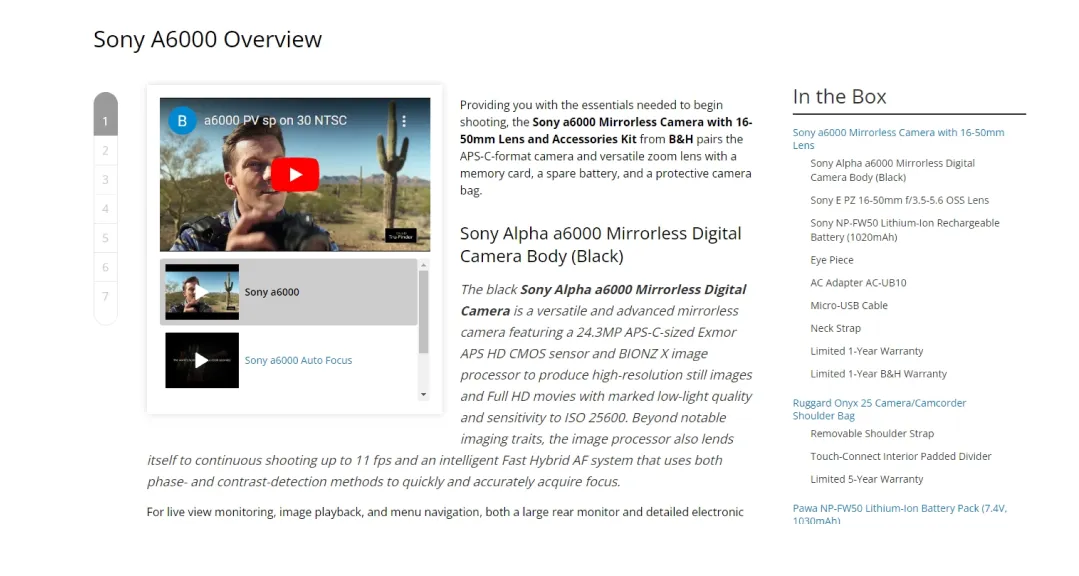
Formatting is a great tool to make a text more readable, but it must also be used thoughtfully. In the example above, the formatting has gone overboard, resulting in a text that is difficult to skim. (Source: B&H)
5. Keep the User’s Knowledge and Background in Mind
When writing or rewriting your product descriptions, it makes sense to consider the reader’s background.
If your users and customers are technically savvy, communication can take place on a more technical and advanced level, which can make it easier to provide information in a concise and precise manner (e.g., using industry-specific terms).
If, on the other hand, you are selling to users outside your professional niche, it is advisable to write the product description in plain language, focusing on the value the customer experiences when using the product.
What you should consider
Benefits and practical steps you can control
Adapt your texts to the target audience
If you are dealing with a broad, non-specialized customer segment, it can be beneficial to write product descriptions in everyday language, and save the technical details in a separate “Specification” tab or similar.
Benefit: Better writing processes and a better end result
A side effect of having a clear separation between sales and specification texts is that you get the opportunity to create more clearly defined processes, supported by automatic notifications and dashboards. This could, for example, be in connection with the creation of new products, where the marketing department is automatically notified about the need for a description, while subject matter experts (or perhaps the supplier) receive a notification that technical descriptions are missing.
Other tips and tricks for your product texts
Good texts are worth their weight in gold, and many take the underlying work for granted when working with ecommerce.
With new AI tools at hand, the starting point for writing well-formulated, descriptive texts in record time is better than ever before. We predict that 2023 will bring significant advances in how artificial intelligence can support our work with, for example, texts and images.
Until then, we still have to deliver the necessary effort ourselves, which in any case also yields the best results.
Avoid too much "sales hype"
There is a fine line between good product descriptions and product descriptions with way too much sales hype.
It’s somewhat paradoxical that we shouldn’t "oversell a product" (is that even possible?), when after all, that is the purpose of our ecommerce efforts.
This challenge is further complicated by our individual preferences, where some people like vivid texts with superlatives practically spilling over each other, while others prefer short, precise texts without noise.
The task here is to identify the level your customers respond best to.
The best way to meet your users’ needs is by experimenting. You can either A/B test product texts on the same product or work with different types of texts across categories and see what performs best.
Use documentation to strengthen your credibility
Datasheets, guides, manuals, and other informational documents can be a great way to boost your brand’s credibility.
At the same time as you divide and structure your content, additional documentation helps give users a sense of transparency, which in turn builds trust in your brand.
All documents — for example, those from your suppliers — that provide detailed product and material descriptions can therefore be seen as a welcome supplement to the texts found directly on the product page.
Make sure to place any documents in an easily accessible section/tab where users can quickly access them in a standardized format (PDF, JPG, or similar).
Conclusion: Texts are complex - experiment and find what works!
Whether you sell expensive, cheap, complex, or simple products, and whether it’s to consumers or businesses, you should always give the customer the opportunity to make an informed purchasing decision.
Texts inherently have more nuances than images, which makes it difficult to give a definitive answer on what a good product description looks like.
One thing is certain: a good text is tailored to your products and your users.
As we have emphasized in this article, your work with texts can be optimized so that your less important products don’t take up all your time.
In the next article, we will explore product variants and provide tips and tricks on how to best manage and present them.

